As one of three doctors caring for approximately 1,100 animals, Associate Veterinarian Dr. Julie Swenson always has a lot on her plate.
But she never loses sight of the importance of animal nutrition. Since 1980, March has been National Nutrition Month, so it is the perfect time to go in-depth on some of her Fossil Rim considerations.
“Nutrition is definitely one of the most important things to keep an animal healthy,” Swenson said. “It prevents illness, but can also mitigate illness and aid in recovery. It’s important for humans to remember how crucial good nutrition is for them, too. Your body essentially functions based off of how well you feed it, and animals are no different.”
Psittacines & Tortoises
Some of the most complex diets among Fossil Rim animals belong to the psittacines, or the birds within the parrot family. At Fossil Rim, that relates to bare-eyed cockatoos, blue and gold macaws, and eclectus parrots.
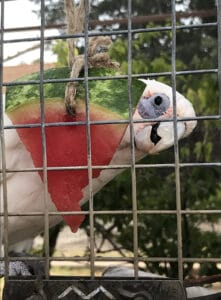
“Psittacines are a lot like humans in regard to their eating habits,” Swenson said. “It’s all about variety. In the wild, they’ve perfected the art of foraging lots of different food items. It depends a great deal on location, plus fruits, vegetable matter and seed availability, which changes by season. Here, since we have more temperature variation than the tropics, we often aren’t able to vary their diet items as much.
“Even so, we do our best to provide mixes of beans, vegetables, and fruits, plus a pelleted diet with micronutrients and macronutrients that might not be found in the other items. We take that diet and vary it throughout the week to avoid giving them the same things on consecutive days as much as possible. Psittacines are notorious for getting bored with their diet if it doesn’t have variation.
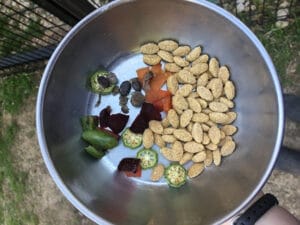
“For example, they might get a bean mix one day and a veggie mix the next with a small amount of varying fruits on both days. The produce tends to vary with season, but they’ll always get a base level of pellets.
“Their pelleted diet actually meets all their nutritional requirements, but psittacines are rarely willing to only eat a pelleted diet. They like the variety of fresh fruits and vegetables too much.”
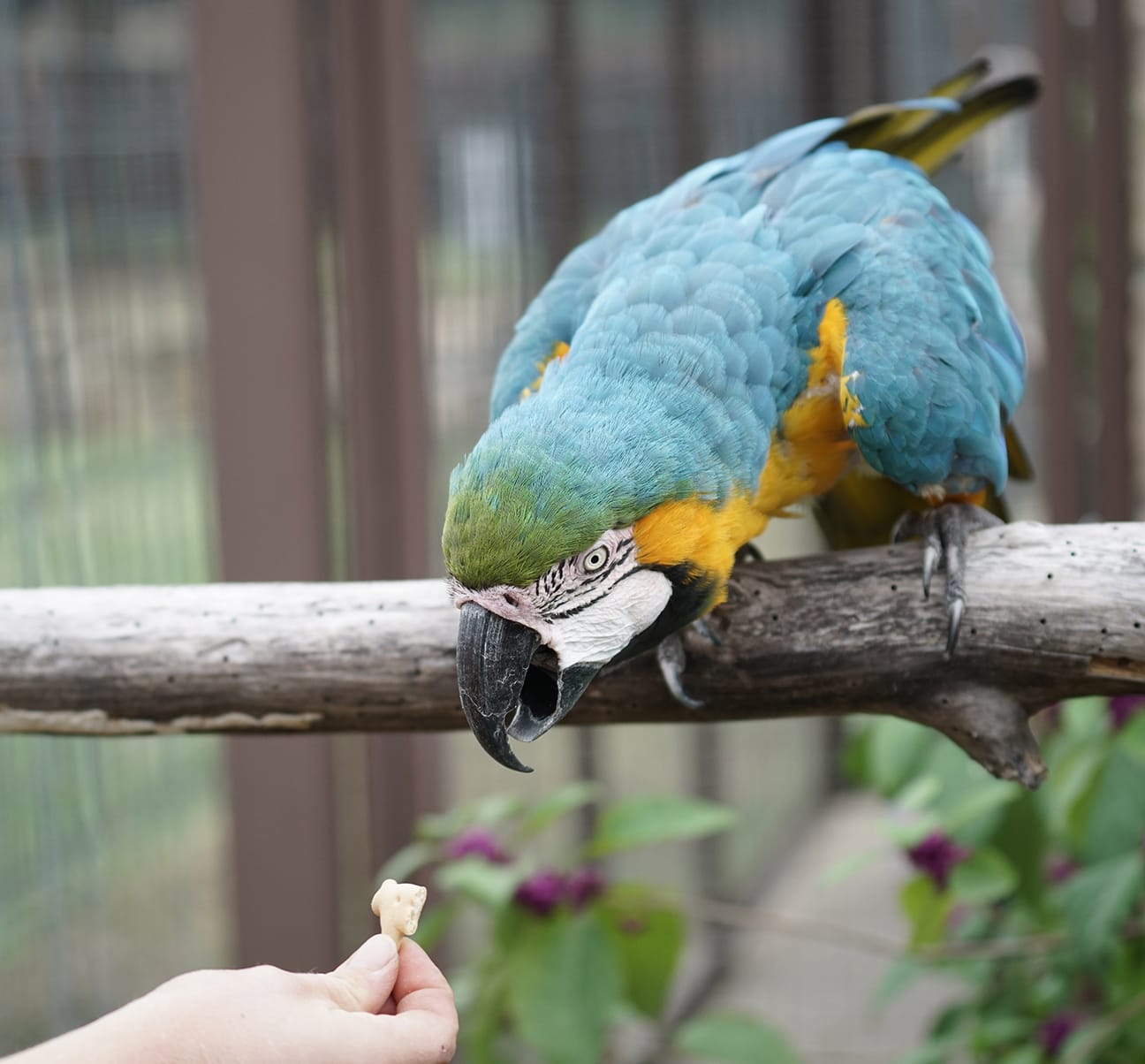
Swenson also briefly addressed the diets of some other Children’s Animal Center residents, African spurred and Texas tortoises.

“Like most tortoises, these are strict herbivores, but again, variety is the key for these animals,” she said. “Especially since they are not on a pelleted diet. So, the vegetable matter they are offered has to meet all of the varied nutritional requirements they have. The Children’s Animal Center staff spends a lot of time finding different greens and vegetables to mix together to make an appetizing, complete tortoise diet.”

Maned wolves
While maned wolves are carnivores according to taxonomy, they are omnivores regarding their wild and captive diets.
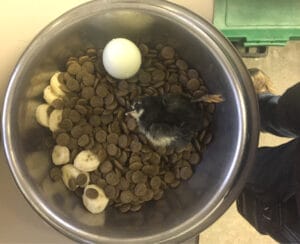
“A large percentage of their diet in the wild is fruits, vegetables, and plant material,” Swenson said. “Depending on the season, there is a big change in the plant component of their wild diet. That’s hard to replicate in captivity, because they live in a very specific ecosystem with specific plants we don’t have. We utilize the best plants we have available to vary the diet since, in general, maned wolves don’t like repetitive diets.
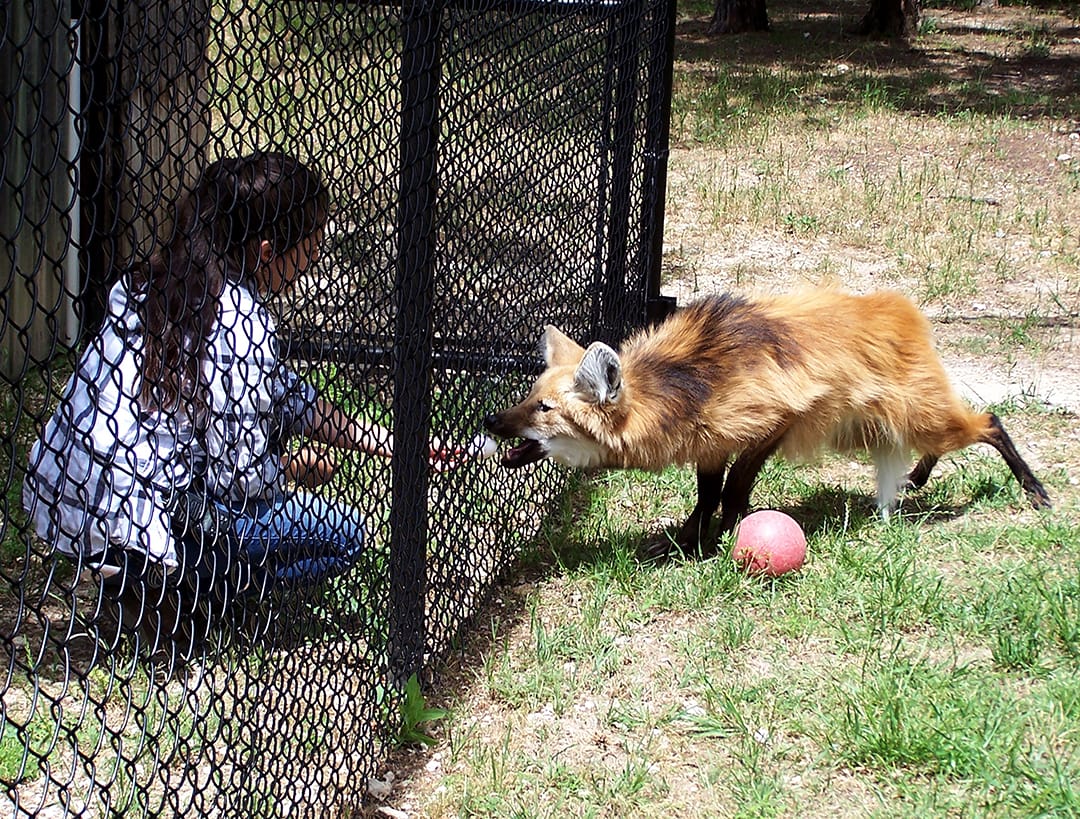

“In captivity, it’s easy to think that it’s okay to feed a maned wolf as if they were a dog, since they appear very similar, but this is not consistent with what they have evolved to eat in the wild. If they are fed like a true carnivore, they may get extra protein they aren’t built to tolerate, which can cause urinary, kidney, and GI problems.

“We are well-aware of the need to keep their protein intake down, but it’s difficult to balance with the produce options we have available, especially given that the animals themselves tend to be very picky in terms of which items they like to eat. However, every attempt is made to make a complete diet that mimics, as closely as possible, what they would eat in the wild.”
Black rhinos
Wanting to remind people just how different black rhinos and white rhinos really are, Swenson was able to approach it from a dietary angle.
“We can go right to the GI tract to differentiate between browsers and grazers,” she said. “A key distinguishing characteristic between the two applies to iron uptake, which affects the health of black rhinos in captivity. Browse basically refers to trees, bushes, and shrubs, as opposed to grasses. Black rhinos evolved on a diet that is very heavy on browse, which tends to be fairly low on iron.
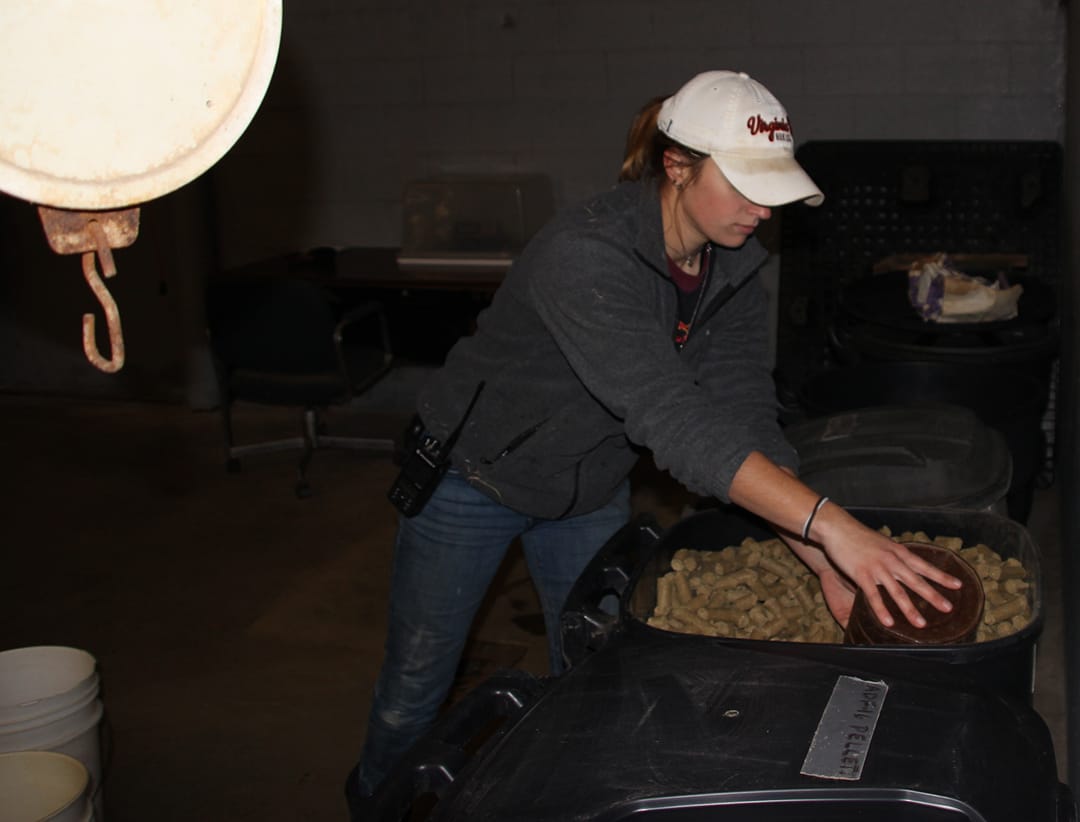
“So, in the wild, getting rid of excess iron isn’t really a concern. Meanwhile, white rhinos are eating grasses and, by default, bits of soil, which results in higher iron intake. Because of this, they had to evolve over time to get rid of that excess iron.
“In captivity, it is very difficult to make a black rhino diet that is as low in iron as their wild diet. This is in part because it is difficult to get enough browse to feed a 2,200-pound black rhino as its sole food source. So, you end up including hay and pellets that have relatively high iron content, and since the black rhino did not need to evolve a mechanism to get rid of the excess iron, it gets stored in their liver.
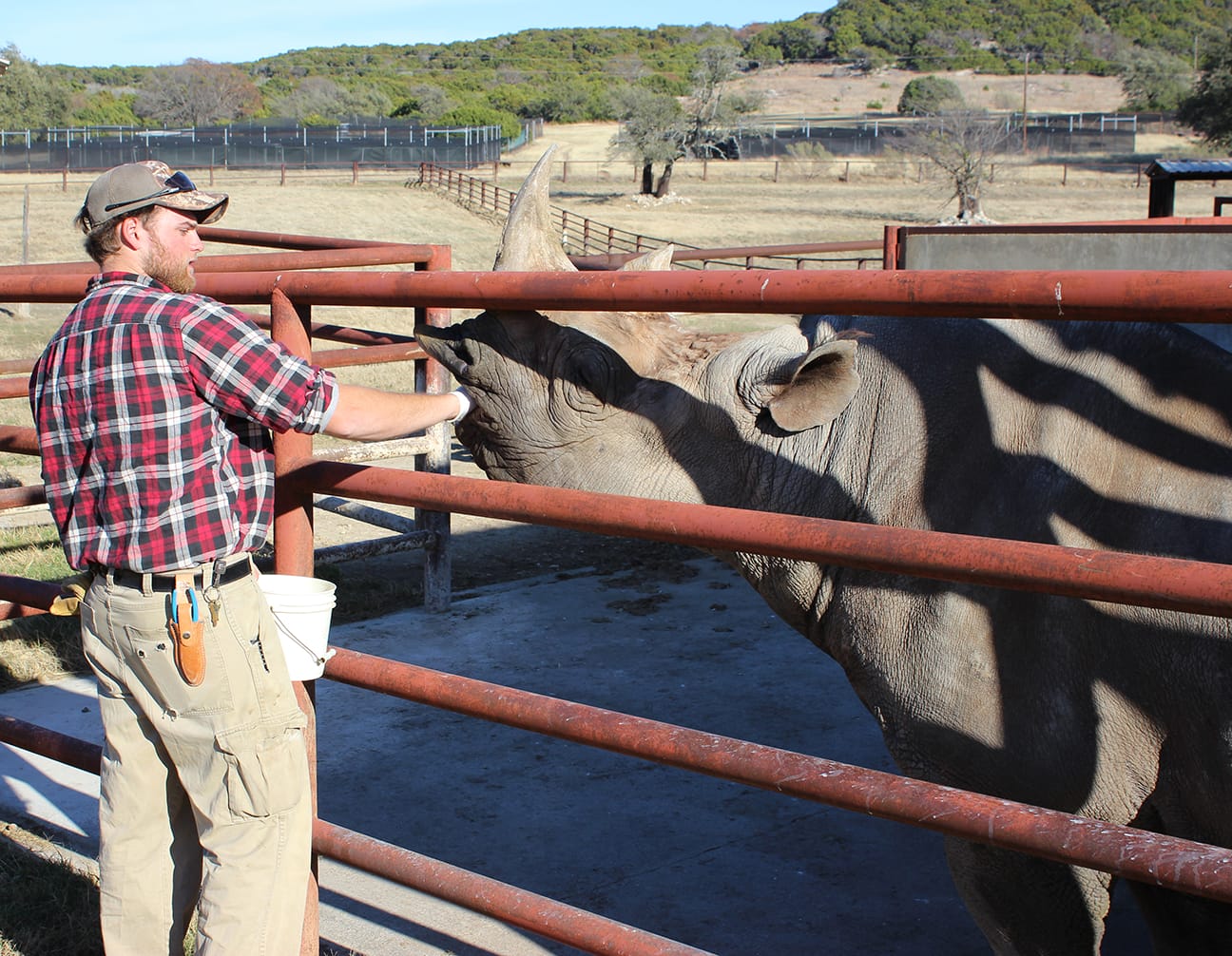
“Over time, that excessive iron in the liver creates pathology and causes disease. Iron storage disease can be a huge problem in captive black rhinos. We try to mitigate this disease in captivity by minimizing the amount of grass hay we feed and using legume hays when possible instead, adding in as much browse as we possibly can.”
Giraffes
Giraffe diets are very complex as well, but – for this portion – Swenson focused on the matter of the tooth wear of captive giraffes versus wild giraffes.
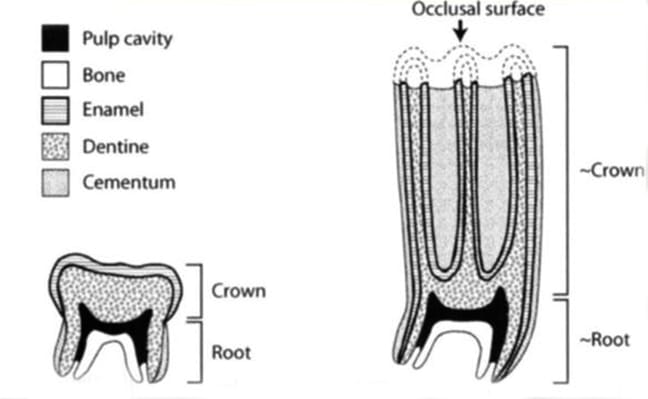
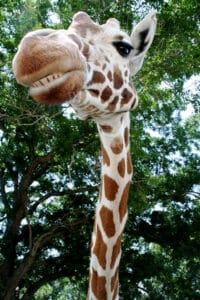
“If you look at giraffes in the wild, which tend to eat browse, and giraffes in captivity, which tend to eat a more grass-heavy diet, their tooth wear is very different,” Swenson said. “Generally, browse is not very abrasive, but grasses are because they have a high silica content. Other species of ruminant grazers have what’s known as hypsodont dentition, which is a tooth shape with a very high crown that is designed specifically for abrasive foods. Giraffes, like other animals that eat a large proportion of browse, however, have brachydont dentition.
“This is a tooth shape with a much lower crown that is not designed to handle abrasive foods like grasses, but is instead designed to handle the less abrasive browse plants. Historically, if you compared the skulls of wild and captive giraffes, you could tell which was which by the wear of the teeth. Captive animals had excessive tooth wear due to being fed a more highly abrasive diet than the one they evolved to eat in the wild.
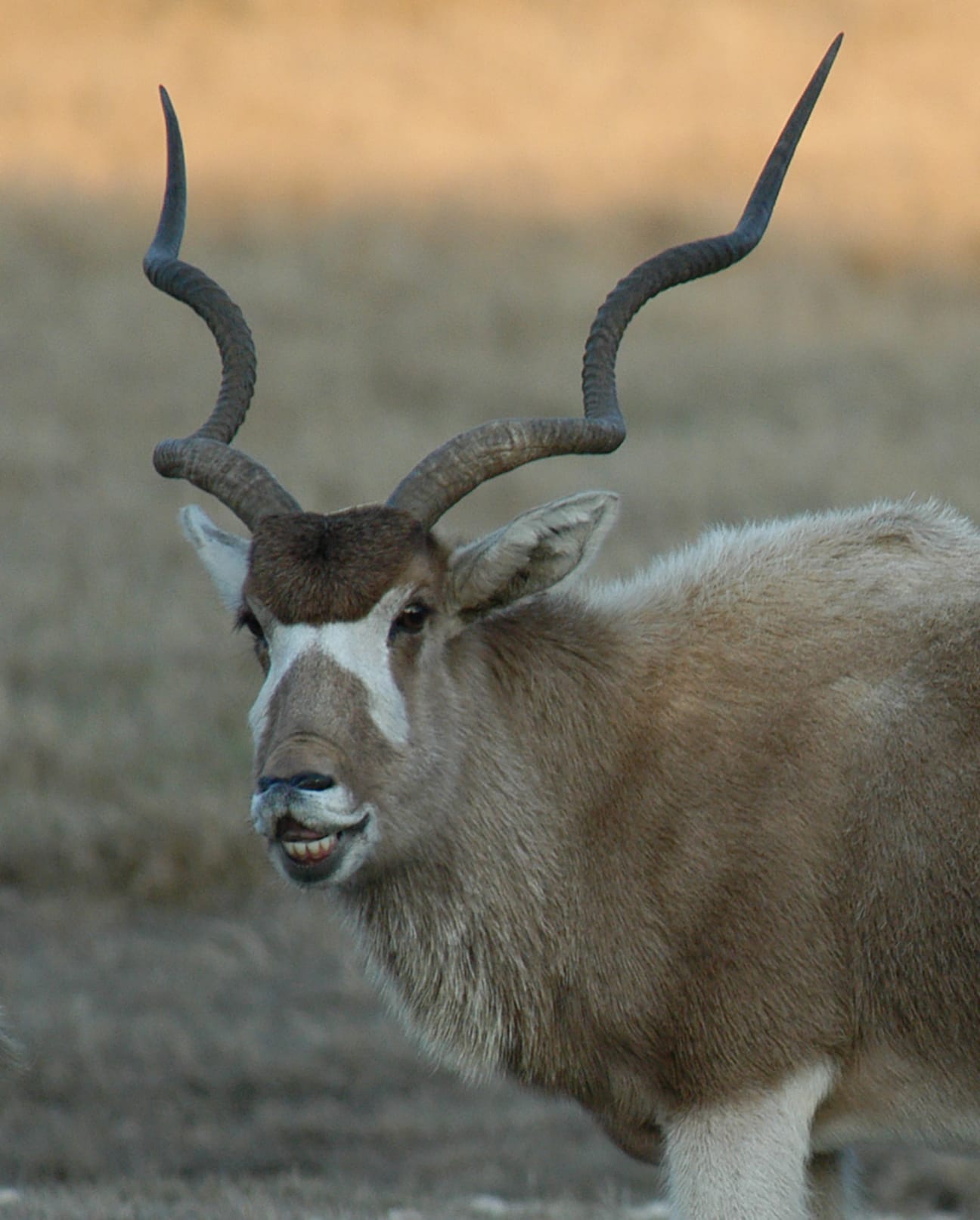
“Prior to recent dietary changes, many captive giraffes died younger than they do now because their teeth wore down after years of ingesting a highly abrasive diet. They were unable to gain adequate intake of nutrients with worn-out teeth. With this knowledge in hand now, we can better manage giraffes in captivity by offering them a more browse-rich diet and avoiding the more heavily abrasive grasses when possible to promote better dental health.”
Homegrown Nutrition
Every herbivore at Fossil Rim has at least a portion of its diet comprised of items grown on Fossil Rim property.
“We grow a lot of our own herbivorous food here, from cactus pads for tortoises to coastal hay for our ruminants and rhinos,” Swenson said.
There are coastal hay fields and an oat field accounting for 114 acres of Fossil Rim.

“By growing most of our hay here, we know what goes into the soil in that pasture and onto the plants themselves,” she said. “We can harvest it when we want to at the optimal time. Fortunately, we have someone like (Agriculture Resources Manager) Daniel (Branham) who is excellent at his job and always tries to make the correct decisions in the interest of our animals. In addition to using the fields for growing hay, we will also sometimes open them up so the animals can graze them while they are still green.
“Obviously, the key to growing our own food is the land (1,800 acres) we have available to do so. Most zoologic institutions don’t have that option.”
Transport takes a toll on nutrition.

“Think about it for humans, vegetables you grow in your own garden are much more nutritious than the ones you buy in a store, which have to be processed and transported,” she said. “Every step along the way, you lose some of the nutrients from that plant. Being able to have browse, for example, that we grow on these grounds for black rhinos – we could freeze it to serve them over the winter, but it would lose nutrients. The same goes if you dried it out.
“Feeding them browse fresh, right off the tree, is the best we can do for them. And luckily, we have a lot of browse-appropriate trees on grounds, which provide very good nutrition for a number of species. We try to pick trees that are nutritious, that the given animal likes, and that are abundant enough that we won’t damage the trees by trimming the same ones too heavily.”
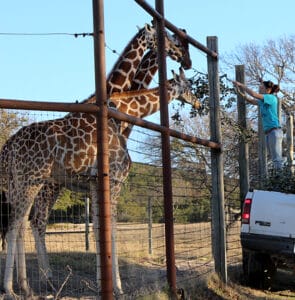
The Children’s Animal Center has a garden where several food staples are grown for its residents. Also, the staff at the APC (Attwater’s prairie chicken) facility has some new nutritional efforts underway.
“We seeded an unoccupied adult flight with a variety of native grasses and legumes to give the adult APCs a natural selection of vegetation instead of the pens mostly containing coastal Bermudagrass,” said Avian Curator Janet Johnson. “The staff at the Attwater Prairie Chicken National Wildlife Refuge suggested we add a variety of greens – kale, collards, dandelion, parsley, and sprouts – for four of our nesting hens as a trial study to see if we can improve egg viability. The Houston Zoo will also be partaking in this study at their facility. A variety of organic sprouts – alfalfa, clover, and mung – will be added to the enclosures housing APC chicks as a source of natural enrichment and to aid in transferring them to a natural diet in their prerelease stage.”
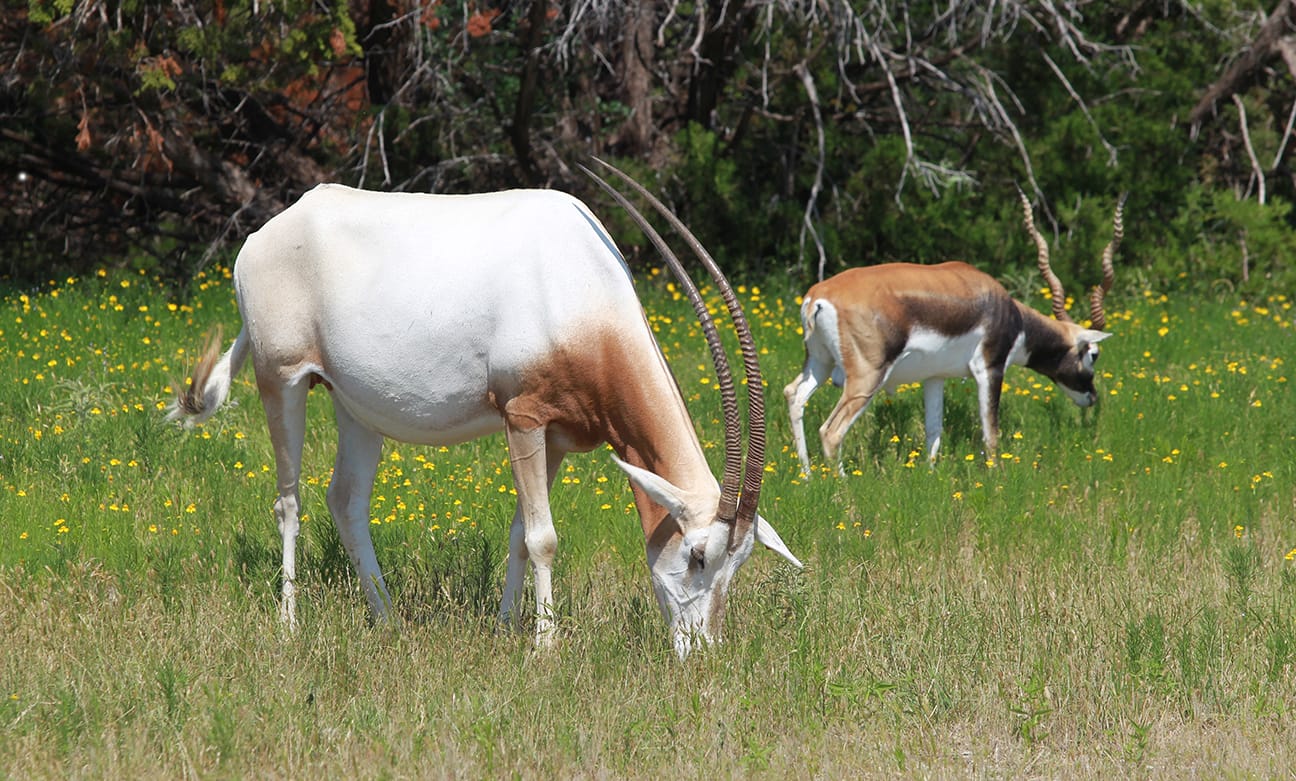
There is also nutrition to be found that naturally occurs in the pasture animals’ environment.
“A large portion of the diet for most of our herbivores comes straight from the native plants in the pastures,” Swenson said. This includes the grasses, flowers, forbs, and weeds that grow naturally in this part of Texas. These plants provide great forage.”
Fiber
Humans are well aware of the issues lack of fiber can cause in their diet, and animals are not invulnerable in this regard.
“For any of the hoofstock, we have to make sure they have an adequate amount of fiber in their diet,” Swenson said. “Otherwise, they can end up with several different nutritional diseases. The animals that aren’t getting enough fiber won’t put on weight properly and are more susceptible to parasites. If we need to bump up an animal’s fiber because it isn’t managing to get enough out on its own in the pasture, we can bring it into the pens where there is less competition and offer it large amounts of long stem grass hay.”
No Nutritionist, No Problem
Fossil Rim does not technically have a nutritionist on staff, but it is not as if Swenson and Dr. Holly Haefele are uninformed in this facet of animal health.
“Many of the larger zoological institutions have a nutritionist on staff,” Swenson said. “We have several ways to deal with the lack of a full-time nutritionist here. All veterinarians are trained in nutrition to some extent, so we have a basic foundation to start from. For more complicated matters, there are several ways to communicate with a nutritionist.
“Fossil Rim is involved in a lot of SSPs (Species Survival Programs), and many of them have their own nutritionist. For example, if we have a question about maned wolf diet, there is a nutritionist who works specifically with the Maned Wolf SSP. If we have nutritional questions about a species that isn’t part of an SSP or doesn’t have a designated nutritionist, then we can either call another institution with a nutritionist on staff or we can get a nutritionist on consult.”
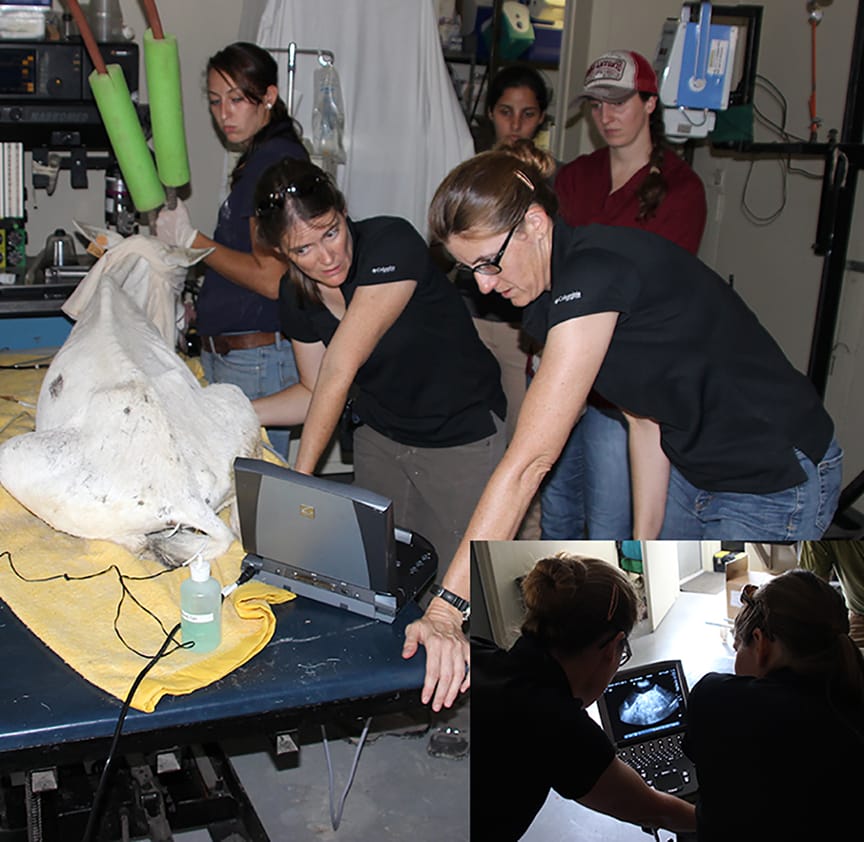
Oftentimes, the veterinarians seek nutritional answers on behalf of the animal care staff.
“But, (Carnivore Curator) Jason (Ahistus), for example, is closely involved with several of the carnivore SSPs, so he will often talk to a nutritionist directly,” she said. “By AZA requirements, nutrition falls under veterinary care, so involvement of our department is essential. Luckily, it is relatively easy to find a nutritionist when we need one.”
Fossil Rim is an ever-changing entity, as someone visiting for the first time in a decade will find out in a hurry, and zoological nutrition is also perpetually evolving.
“There is a lot of nutrition research going on right now at many institutions,” Swenson said. “It’s really helpful for us, because there are constant updates coming out and we adjust accordingly. Nutrition is recognized now as a greater issue for zoological institutions, which means more funding for studies and progress made.”
-Tye Chandler, Marketing Associate

